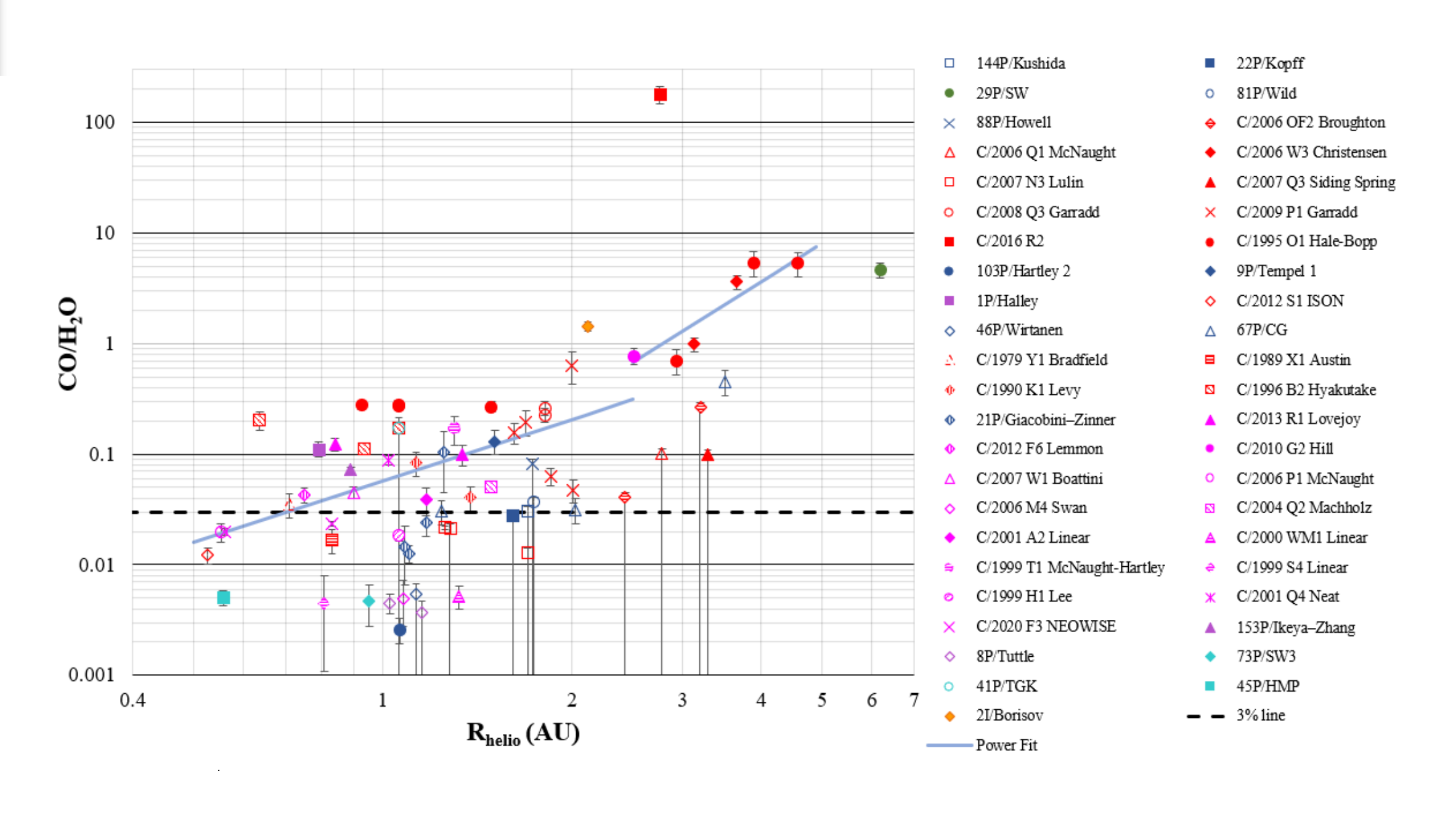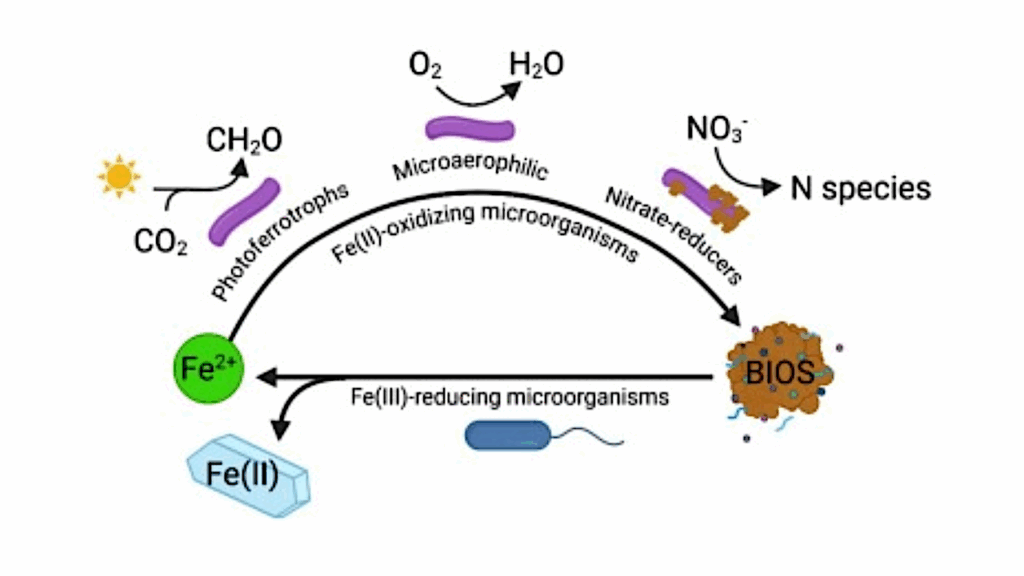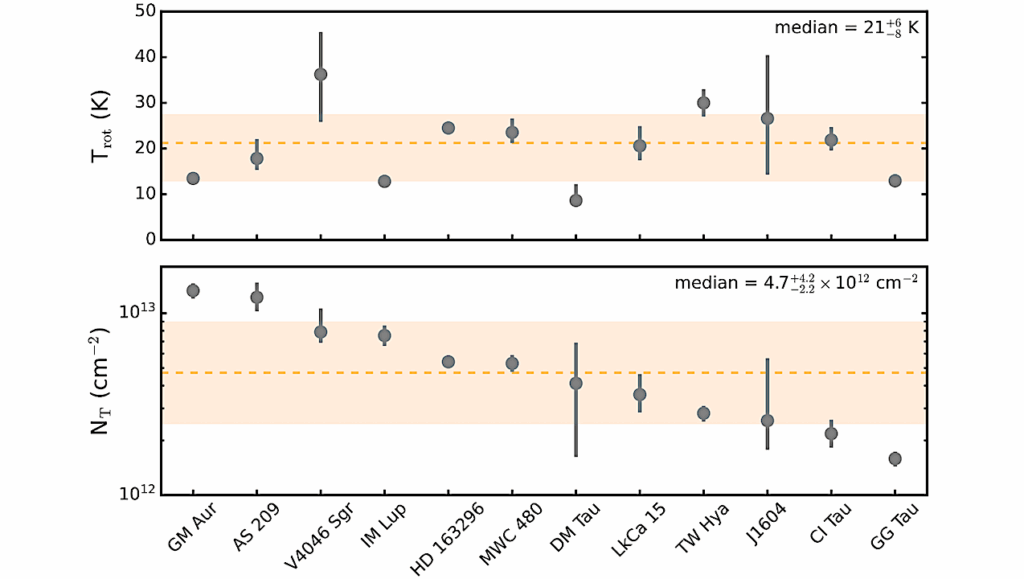A Survey Of CO, CO2, And H2O In Comets And Centaurs

CO and CO2 are the two dominant carbon-bearing molecules in comae and have major roles in driving activity. Their relative abundances also provide strong observational constraints to models of solar system formation and evolution but have never been studied together in a large sample of comets.
We carefully compiled and analyzed published measurements of simultaneous CO and CO2 production rates for 25 comets. Approximately half of the comae have substantially more CO2 than CO, about a third are CO-dominated and about a tenth produce a comparable amount of both. There may be a heliocentric dependence to this ratio with CO dominating comae beyond 3.5 au.
Eight out of nine of the Jupiter Family Comets in our study produce more CO2 than CO. The six dynamically new comets produce more CO2 relative to CO than the eight Oort Cloud comets that have made multiple passes through the inner solar system. This may be explained by long-term cosmic ray processing of a comet nucleus’s outer layers.
We find (QCO/QH2O)median = 3 ± 1\% and (QCO2/QH2O)median = 12 ± 2\%. The inorganic volatile carbon budget was estimated to be QCO+QCO2)/QH2O ∼ 18\% for most comets. Between 0.7 to 4.6 au, CO2 outgassing appears to be more intimately tied to the water production in a way that the CO is not. The volatile carbon/oxygen ratio for 18 comets is C/Omedian ∼ 13\%, which is consistent with a comet formation environment that is well within the CO snow line.
Olga Harrington Pinto, Maria Womack, Yanga R. Fernandez, James Bauer
Subjects: Earth and Planetary Astrophysics (astro-ph.EP)
Cite as: arXiv:2209.09985 [astro-ph.EP] (or arXiv:2209.09985v1 [astro-ph.EP] for this version)
Submission history
From: Olga Harrington Pinto
[v1] Tue, 20 Sep 2022 20:42:53 UTC (3,824 KB)
https://arxiv.org/abs/2209.09985
Astrobiology, Astrochemistry,








